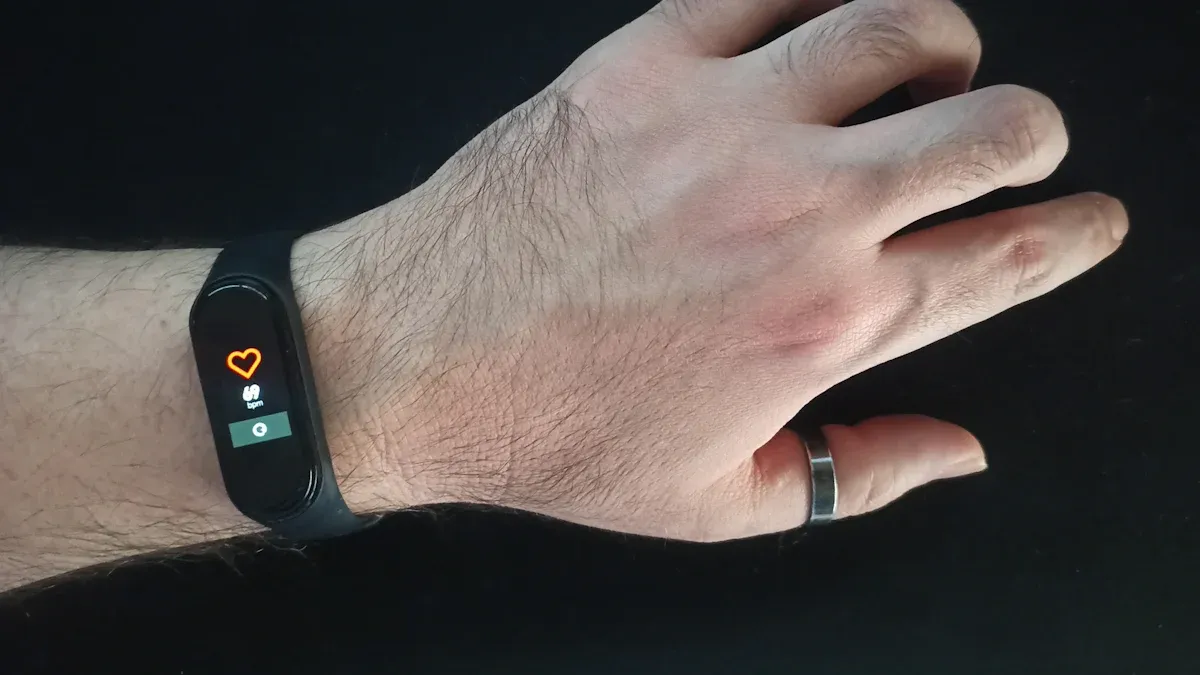TL;DR: If you need reliable numbers, use a validated cuff monitor. Cuffless rings and bands are fine for trends after calibration, not for diagnosis or medication changes. Hybrid watches with mini inflatable cuffs are the most accurate wearables, but they still require correct fit and periodic checks against a standard cuff.
Why most wearables struggle with BP
- Cuff = direct occlusion. Measures pressure where an artery is briefly blocked.
- Cuffless = estimation. Uses optical signals (PPG) and pulse wave timing to estimate BP. Estimates drift without calibration and can be affected by motion, temperature, skin tone, and vascular changes.
What’s on the market
- Hybrid watches with a cuff
Examples: medical-grade smartwatch designs that inflate part of the strap. These approach cuff accuracy when fitted and positioned correctly. Not all are cleared everywhere. - Cuffless watches and rings
Examples: optical bands, smart rings, and most mainstream watches. Useful for trends after user calibration to a real cuff. Not reliable enough to manage hypertension alone. - Conventional upper-arm or wrist cuffs
Home monitors with published validation remain the reference for treatment decisions.
How to judge a device quickly
- Clinical validation: Look for peer-reviewed validation to accepted protocols (e.g., AAMI/ESH/ISO) or regulatory clearance in your region (FDA/CE/TGA).
- Calibration model: If cuffless, it should allow regular, guided calibration against a validated cuff.
- Positioning guidance: Good devices enforce posture, arm height, and quiet rest.
- Error handling: Quality devices flag poor signals instead of outputting bad numbers.
- Data access: Exportable timestamps and units so your clinician can review context.
Who should buy what
- Diagnosed or suspected hypertension: Use a validated upper-arm cuff as primary. Consider a cuff-watch for convenience, but confirm important readings with the arm cuff.
- General wellness and trend tracking: A cuffless ring or watch can show patterns if you calibrate it and understand limits.
- Athletes and tech enthusiasts: Trend devices are fine for lifestyle insights, not for medication changes.
Mini-reviews at a glance
| Category | Typical examples | What works | Watch-outs |
|---|---|---|---|
| Hybrid cuff-watch | Strap inflates | Closer to medical accuracy when fitted and used correctly | Bulky straps, limited sizing, availability and regulatory status vary |
| Cuffless watch/band | Optical sensors + algorithms | Trend direction after calibration | Drift over time, sensitive to motion/skin temp/vasoconstriction |
| Smart rings | PPG in a ring form | Sleep and long-term trends | Small arteries at finger, calibration critical, not treatment-grade |
| Home arm cuff | Validated monitors | Gold standard for home use | Needs correct cuff size and technique |
How to test your wearable at home
Do a simple three-point check on a calm day:
- Rest 5 minutes. Sit, feet flat, back supported, no caffeine or exercise 30 minutes prior.
- Take paired readings: Measure with the wearable. Within 1 minute, measure with a validated upper-arm cuff on the same side. Repeat three pairs.
- Compare averages: If the wearable’s mean systolic/diastolic differs by >5–10 mmHg, recalibrate or adjust fit. If still off, do not use it for medical decisions.
Common pitfalls that skew readings
- Poor strap or ring fit
- Cold hands, recent exercise, or caffeine
- Talking, crossing legs, or arm not at heart level
- Measuring immediately after standing up or lying down
- Relying on a single measurement instead of an average
What “validated” actually means
- The device passed a formal protocol against a mercury or calibrated reference across diverse users and BP ranges.
- Marketing terms like “clinically tested” are not the same as published validation or regulatory clearance. Read the fine print.
Bottom line
- For accuracy: A validated upper-arm cuff remains the best choice.
- For convenience: Hybrid cuff-watches are promising for spot checks.
- For trends: Cuffless wearables are acceptable if you calibrate and confirm important values with a cuff.
Track it with Cardilog
Whatever you use, log readings in Cardilog to see AM vs PM patterns, weekday vs weekend differences, and night-dip trends, then export a doctor-ready report. Cardilog helps you spot patterns faster and discuss reliable data with your clinician.
FAQ
Do any smart rings measure BP accurately?
Not at treatment-grade levels. Rings estimate BP from optical signals. Use them for trends, not dosing decisions.
Are wrist cuffs accurate?
Some validated wrist cuffs can be accurate if the wrist is at heart level and posture is correct. Upper-arm cuffs are more forgiving and preferred.
How often should I calibrate a cuffless device?
Follow the manufacturer’s schedule. As a rule, recalibrate whenever you change fit, see drift, or after illness, weight change, or new meds.
Can I manage hypertension with a cuffless wearable alone?
No. Confirm key readings with a validated cuff and follow clinician guidance.
